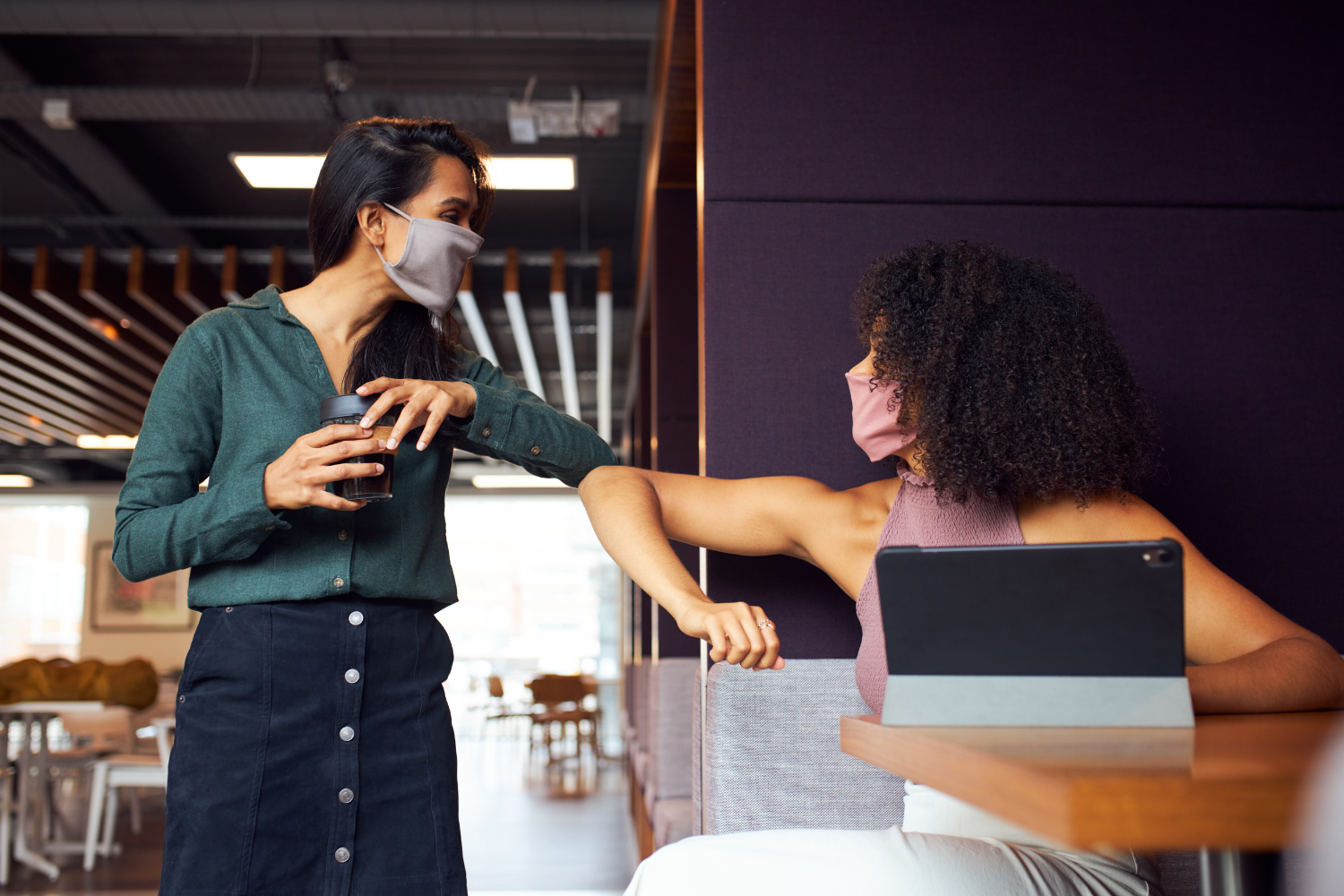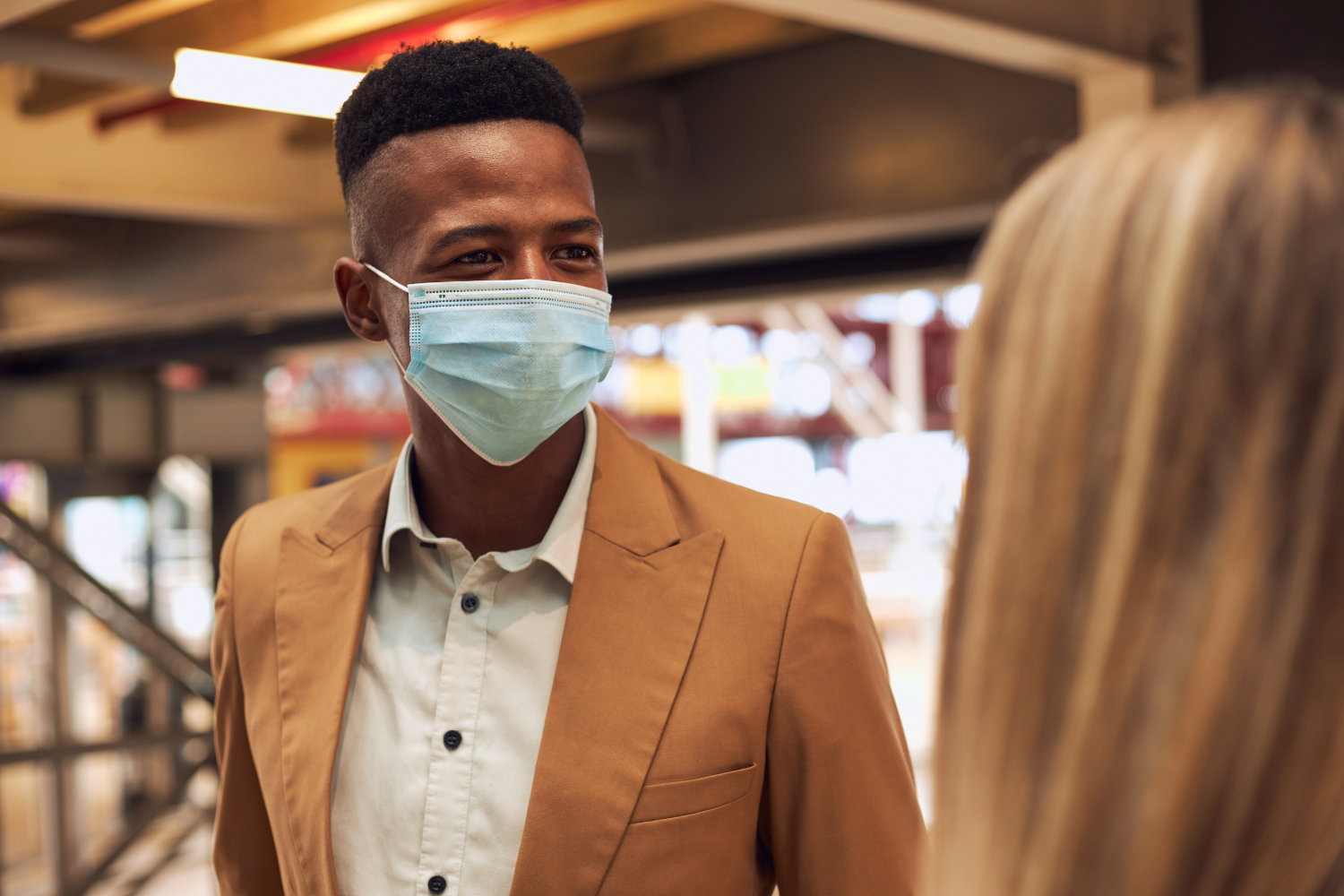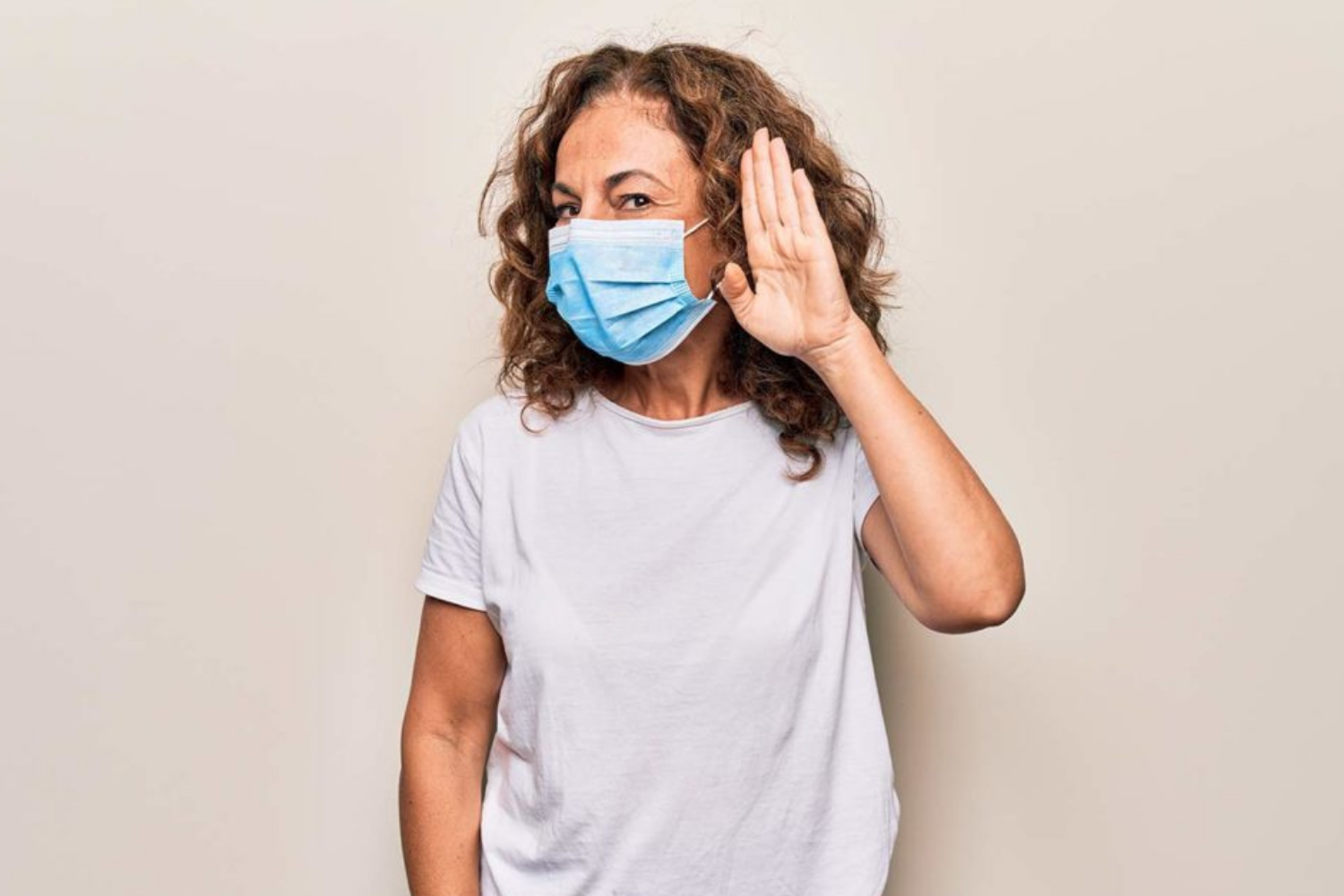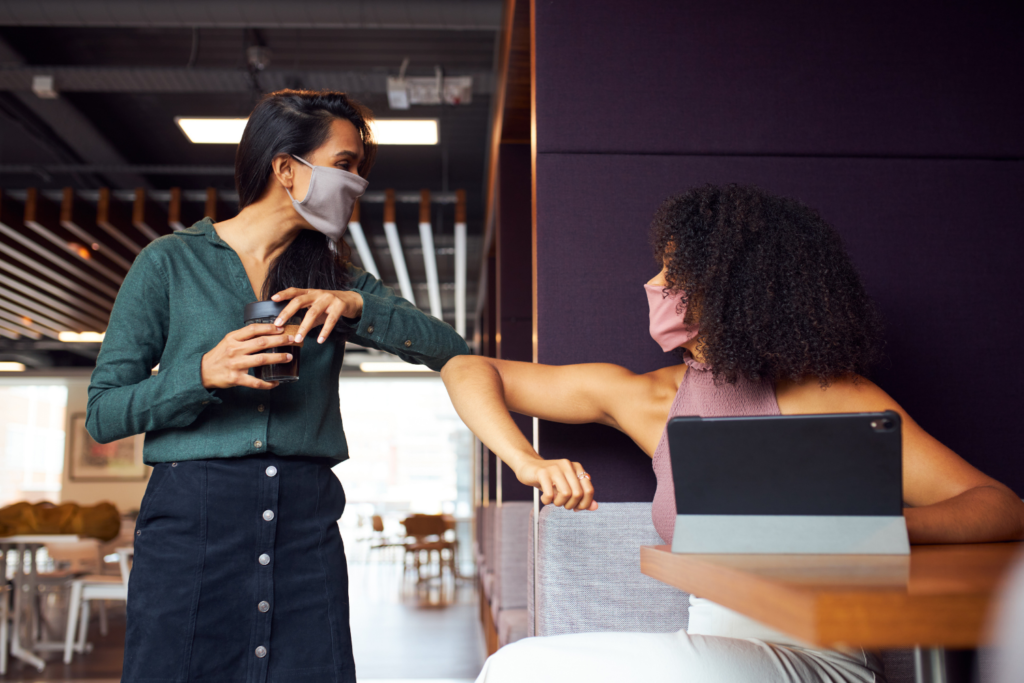While most of the United States is still under a mask mandate as of the writing of this blog, it means our lives are a bit different when it comes to communicating. Many people are using email and texting to connect digitally, but there are still ways to connect in person. Up to 80% of intended meaning is communicated non-verbally. Wearing a mask means most of your face is covered, but your eyes are not.
Ready to make that masked connection? Here are a few ways to bridge the gap while wearing a mask.
How to make the body language connection:
Replace the handshake

While most greetings traditionally start with a handshake and a smile, social distancing and wearing a mask means this likely is no longer the case. A wave hello, meaningful eye contact, an elbow tap can be just as effective as the handshake and there is shared experience that under “normal” conditions, you would have shaken hands. Work on developing your personal greeting, whether it’s a wave hello, a raised hand, or even a tilt of your head.
Practice active listening

Without facial expressions, it can be hard to let the other person know that you are engaged and listening to what they are saying. Try using body language to communicate this by aligning your torso with theirs, and even leaning in slightly if it’s appropriate. Nod your head as they’re speaking so they know you’re paying attention, and even say things like, “I see,” and “I hear you.”
Making a verbal connection
If you haven’t already, it’s time to work on your “mask voice.” Typically, we use our facial expression to convey emotions and mood. Wearing a mask means you need to rely on your voice to do most of the work. Modulating your voice is key to conveying your message while speaking. Here are some ways to do that:
Speak up

While there’s no need to yell, you do need to raise the volume of your voice. Masks muffle our speech, so you should talk louder and more slowly to get your point across.
Pause it
Wearing a mask means you no longer have the ability to pick up on visual cues that let you know when someone else has finished speaking. Throughout the course of the conversation, try taking longer pauses than normal to give the other person a chance to speak up or respond.
Express yourself
If you can’t convey emotions with your face, let your voice and words do the talking for you. Whether you are surprised, excited, or even frustrated, use your tone of voice to let someone know how you feel.
Ask questions

Finally, ask lots of thoughtful questions when meeting someone for the first time. It shows you care, are interested in what they have to say, and is the perfect way to make a meaningful connection–mask or no mask.
As humans, we are hardwired for connection to one another. Wearing a mask doesn’t have to stop that connection, it just requires some creativity to make it work.










